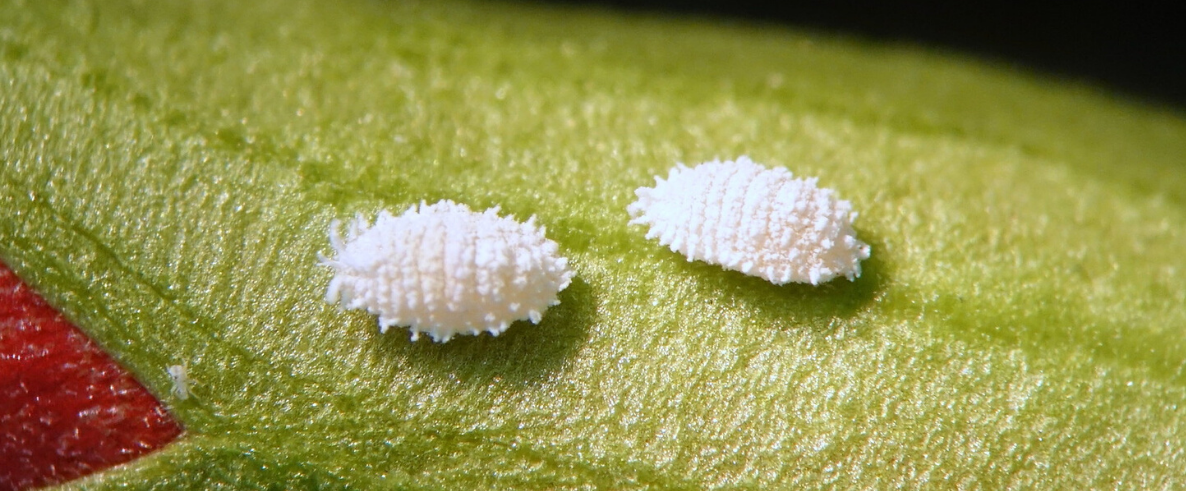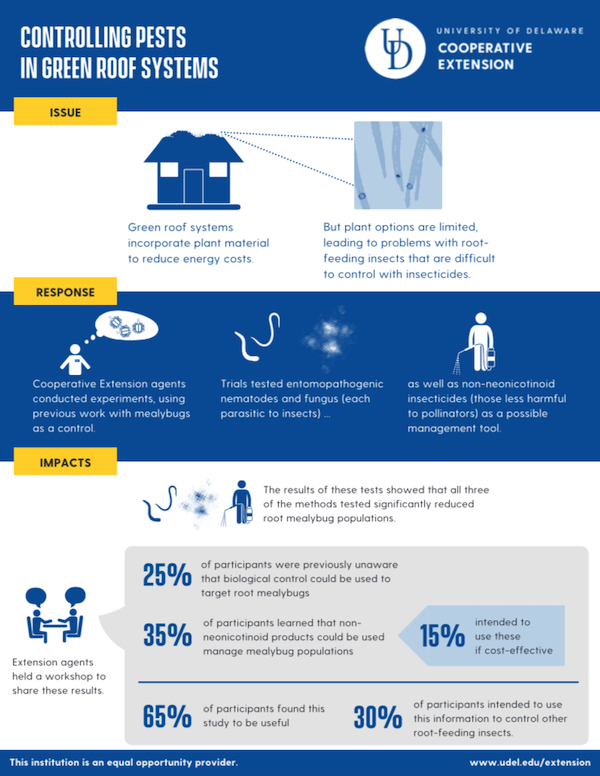
CONTROLLING PESTS IN GREEN ROOF SYSTEMS (2019)
- Health & Well-being
-
Agricultural Programs
- Agribusiness
- Animal Science
- Beginning Farmer Program
- Commercial Crops
- Commericial Horticulture
- Delaware Soil Testing Program
- Disease Management
- Farm Vitality and Health Project
- Irrigation
- Nutrient Management
-
Insect Pest Management
- Insect Trapping Program
- IPM Hot Topics
- Commercial Field Crop Insect Management
- Commercial Field Crop Disease Management
- Commercial Fruit & Vegetable Crop Pest Management
- EIPM Implementation Projects
- Pollinators
- Research and Extension Demonstration Results
- Brown Marmorated Stink Bug (BMSB) Management, Research, and Resources
- Publications
- Pesticide Safety Education Program
- UD Plant Diagnostic Clinic
- Variety Trials
- Weed Science
- Certified Crop Advisor Program
- Poultry Biosecurity
- 4-H
-
Horticulture
- Climate Variability and Change
- Delaware Soil Testing Program
- Forestry
- Lawn and Garden
- Master Gardeners
- Master Naturalist Program
-
Nutrient Management
- Nutrient Management Certification
- Continuing Education for Nutrient Management
- Nutrient Management Planning Resources
- Commercial Nutrient Handler Resources
- Poultry Litter and Manure Management
- Turf Management
- Agriculture Notebook
- Horticulture Handbook
- Agriculture & Horticulture Handbooks
- Crop Production
- Soil Fertility
- Delaware Climate Change Coordination Initiative (DECCCI)
- Salt Impacted Agricultural Lands


ISSUE
Green roof systems are roofs that have incorporated plant material to reduce energy costs. Management options for plants grown in these locations are extremely limited; therefore root-feeding insects are often very difficult to control with insecticides.
Cooperative Extension agents, Stanton Gill (University of Maryland) and Brian Kunkel (University of Delaware), have been working with nurseries and greenhouses experiencing this particular pest problem.
RESPONSE
Cooperative’s Extension’s work on the management of root mealybugs began several years ago. Since this work did not completely rely on insecticides, it was used as a control. One of the trials conducted by Gill and Kunkel focused on the use of entomopathogenic nematodes (a parasitic thread worm that kills insects), entomopathogenic fungi (a fungus that can act as a parasite in insects), and growing location to control root-feeding insects. Non-neonicotinoid insecticides (those less harmful to pollinators) were also examined as a possible management tool.
IMPACT
Results found that the entomopathogenic nematode, Steinernema carpocapsae, and the entomopathogenic fungus, Beauveria bassianna, can significantly reduce root mealybug populations on Sedum grown in plug trays in a hoop house. Sedum is a genus of flowering leaf succulents also known as stonecrops.
They also indicated that some non-neonicotinoid insecticides also significantly reduced populations of root mealybug. Gill and Kunkel conducted a workshop where they shared these findings, and we discovered that 25% of the attendees were previously unaware that biological control could be used to successfully target root mealybugs. 35% of the attendees said they learned there were non-neonicotinoid products that could be used to successfully manage mealybug populations, and 15% of attendees intended to use them if they proved to be cost-effective.
Sixty-five percent of attendees stated the information generated by the studies was useful and that they appreciated the project’s focus on difficult-to-manage pests. 30% of attendees also stated that they may try to use this information to control other labeled root-feeding insects.
The University of Delaware is an Equal Opportunity Institution and Provider. Visit UD’s Office of Equity & Inclusion to learn more.
Additional Links
531 South College Avenue Newark, DE 19716 (302) 831-2501
